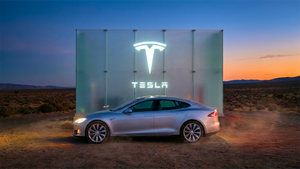May 2023 New-Vehicle Sales to Surge 15.6% Year Over Year As New-Vehicle Expenditures Grow 13% in Same Period
J.D. Power:
The Total Sales Forecast
Total new-vehicle sales for May 2023, including retail and non-retail transactions, are projected to reach 1,337,700 units, a 15.6% increase from May 2022, according to a joint forecast from J.D. Power and LMC Automotive. May 2023 has 25 selling days, one more than May 2022. Comparing the same sales volume without adjusting for the number of selling days translates to an increase of 20.4% from 2022.
The Retail Sales Forecast
New-vehicle retail sales for May 2023 are expected to increase when compared with May 2022. Retail sales of new vehicles this month are expected to reach 1,079,200 units, a 9.6% increase from May 2022. Comparing the sales volume without adjusting for the number of selling days translates to an increase of 14.2% from 2022.
The Takeaways
Thomas King, president of the data and analytics division at J.D. Power:
“The industry is positioned for another strong month in May as retail sales are estimated to surge 9.6% from a year ago. This positive performance is complemented by a projected 0.7% increase in average transaction prices. As a result, it is anticipated that consumers will spend nearly $47 billion on the purchase of new vehicles in May, showcasing a significant 13% growth from a year ago.
"Retail inventory levels in May are expected to finish at approximately 1.3 million units, remaining consistent with April’s level. However, this represents a substantial increase of 48% compared with May 2022. The improvement in vehicle availability has led to decreased dealer margins and increased manufacturer incentive spending in that same period. However, both metrics are relatively stable when compared with the previous month. The performance of the retail market continues to demonstrate robust demand for vehicles, augmented by consumers who have delayed purchases due to low inventory.
“Manufacturers continue to leverage increased vehicle production to allocate more vehicles to fleet customers. Fleet sales are projected to increase 50% from May 2022.”
New-vehicle transaction prices continue to rise, with the average price reaching a May record of $45,838. This is a 0.7% increase from a year ago. The record transaction prices means that consumers are on track to spend nearly $46.9 billion on new vehicles this month—the second highest for the month of May and 13% higher than May 2022.
“The improved supply of vehicles vs. a year ago has resulted in a decline in dealer profits. However, dealer profits remain well above pre-pandemic levels. The total retailer profit per unit—which includes grosses and finance and insurance income—is expected to reach $3,732. While this is 25.8% lower than a year ago, it is still more than double the amount in May 2019. The primary reason for the decline in profit is that fewer vehicles are being sold for prices higher than the manufacturer's suggested retail price (MSRP). This month, only 31% of new vehicles are projected to be sold above MSRP, which is down from a high of 49% in July 2022.”
Total aggregate retailer profit from new-vehicle sales for this month is projected to be down 16.5% from May 2022, reaching $3.8 billion for the third-highest May on record.
“Retailers continue to engage in significant pre-selling of their inventory. However, due to higher inventory levels, more consumers are buying vehicles that are on the lot. In May, 46% of vehicles are projected to be sold within 10 days of their arrival at the dealership, which is down from the peak of 57% in March 2022. The average time that a new vehicle spends in the dealer's possession before being sold is expected to be 30 days, up from 12 days a year ago, but still less than half the pre-pandemic average of 70 days.
“Manufacturer discounts have remained relatively consistent compared with April but have increased materially from a year ago. The average incentive spend per vehicle has risen 88.1% from May 2022 and is currently on track to reach $1,788. Expressed as a percentage of MSRP, incentive spending is currently trending at 3.7%, an increase of 1.6 percentage points from May 2022. One of the factors contributing to this low level of spending relative to historical norms is the lower discounts on leased vehicles. However, discounts on leased vehicles have risen significantly in recent months. This month, leasing is expected to account for 21% of retail sales, up significantly from the low of 16% in September 2022, but well below May 2019 when leased vehicles made up nearly 30% of all new-vehicle retail sales.
“Elevated pricing coupled with interest rate increases continue to inflate monthly loan payments. The average monthly finance payment in May is on pace to be $736, up $48 from May 2022. That translates to a 7.0% increase in monthly payments from a year ago. The average interest rate for new-vehicle loans is expected to be 7.0%, an increase of 206 basis points from a year ago.
“Used-vehicle prices have declined slightly from a year ago but remain close to all-time highs. The average trade-in equity for May is trending toward $9,462, down $247 from a year ago, and down $613 since the peak in June 2022. For context, trade equity this month is still more than double the pre-pandemic level, helping owners offset some of the pricing and interest rate increases.
"In June, key metrics to monitor include inventory levels, pricing and interest rates. Despite the challenges posed by elevated interest rates and pricing, sales volume and transaction prices have displayed remarkable resilience, enabled by the combination of improved vehicle availability and pent-up demand. If most interest rate increases have already occurred, consumers can anticipate excluding this factor from future monthly payment increases, potentially sustaining demand. In terms of pricing, a notable portion of the industry's price increases can be attributed to the sales mix of electric vehicles, while pricing for traditional gas-powered vehicles has demonstrated stability. It will be crucial to closely observe how manufacturers, consumers and other stakeholders in the EV space respond to any divergence in pricing. This becomes especially significant as the proportion of EVs within the overall sales mix continues to grow.”
Sales & SAAR Comparison
U.S. New Vehicle |
May 20231, 2 |
April 2023 |
May 2022 |
Retail Sales |
1,079,212 units
|
1,095,158 units |
945,388 units |
Total Sales |
1,337,670 units
|
1,366,930 units |
1,111,298 units |
Retail SAAR |
12.0 million units |
13.4 million units |
10.8 million units |
Total SAAR |
14.8 million units |
16.1 million units |
12.6 million units |
1 Figures cited for May 2023 are forecasted based on the first 17 selling days of the month. 2 May 2023 has 25 selling days, one more than May 2022. |
|||
The Details
- The average new-vehicle retail transaction price in May is expected to reach $45,838, a 0.7% increase from May 2022. The previous high for any month—$47,362—was set in December 2022.
- Average incentive spending per unit in May is expected to reach $1,788, up from $951 in May 2022. Spending as a percentage of the average MSRP is expected to increase to 3.7%, up 1.6 percentage points from May 2022.
- Average incentive spending per unit on trucks/SUVs in May is expected to be $1,698, up $721 from a year ago, while the average spending on cars is expected to be $1,421, up $567 from a year ago.
- Retail buyers are on pace to spend $46.9 billion on new vehicles, up $5.5 billion from May 2022.
- Truck/SUVs are on pace to account for 79.1% of new-vehicle retail sales in May.
- Fleet sales are expected to total 258,500 units in May, up 49.6% from May 2022 on a selling day adjusted basis. Fleet volume is expected to account for 19% of total light-vehicle sales, up from 15% a year ago.
- Average interest rates for new-vehicle loans are expected to increase to 7.0%, 206 basis points higher than a year ago.
EV Outlook
Elizabeth Krear, vice president, electric vehicle practice at J.D. Power:
“Among the tax credit eligibility rules on newly purchased EVs, there are requirements for critical battery minerals and components. The requirements have significantly reduced the number of vehicles that qualify for the full credit, creating downward pressure on the affordability of EVs. When EVs are leased, however, none of these restrictions apply because the vehicles are technically classified as commercial. This makes the lessor eligible for the $7,500 credit, giving them the option to pass that credit along to customers. Accordingly, lease affordability has surpassed purchase affordability in the J.D. Power EV Index, suggesting that EV lease volumes will surge during the next several months.
“New data shows that public charging station reliability has improved for the first time in two years. This improvement is not exactly cause for celebration, though. Through the end of Q1 2023, 20.8% of EV drivers using public charging stations experienced charging failures or equipment malfunctions that left them unable to charge their vehicles. What’s more, overall customer satisfaction with Level 2 charging—which accounts for 71% of all public charging—declined 11 points during Q1 2023. Customer satisfaction with faster Level 3 charging has improved, but far fewer customers currently have access to these charging points.”
Global Sales Outlook
Jeff Schuster, group head and executive vice president, automotive at GlobalData, parent of LMC Automotive:
“The global light-vehicle selling rate hit 85.4 million units in April, up nearly 2 million units from March. Sales volume was up 23.6% year over year to 6.8 million units, as the overall market continues to improve through increased production and less supply disruption. Of the major markets, China led the growth, up 81% from April 2022. Europe (+21.0%), India (+10.6%) and North America (+9.3%) also posted strong results.
“The selling rate in May is expected to decline slightly to 84.5 million units, but that is still well above May 2022’s 75.8 million units. Global light-vehicle sales are projected to grow to 7.0 million units, an increase of 12.8% from May 2022. Growth is expected to be more level across the various markets. Eastern Europe is an outlier at a nearly 20% increase, as volume returns despite the ongoing war in Ukraine. China is expected to grow 18.5%, followed by North America at 14.7% and Western Europe at 11%.
“April’s volume was in line with expectations, so we are not making any material changes to the topline forecast for 2023. Volume is expected to reach 86.1 million units, up 6.2% from 2022. While risk is balanced overall, there remains some upside potential in 2023 if major markets avoid a recession or consumers show further resilience. There is some mild risk that volume has been pulled forward given expectations for an economic slowdown being delayed until late 2023 or early 2024. The outlook for 2024 global light-vehicle sales is currently holding at 90.3 million units, an increase of 4.9% from 2023.”
About J.D. Power and Advertising/Promotional Rules www.jdpower.com/business/about-us/press-release-info
About LMC Automotive www.lmc-auto.com
View source version on businesswire.com: https://www.businesswire.com/news/home/20230525005315/en/
Contacts
Media Relations Contacts
Geno Effler, J.D. Power; West Coast; 714-621-6224; media.relations@jdpa.com







